A slice of warm cast iron skillet cornbread is the perfect addition to any meal. Using a cast iron skillet gives this tender cornbread a perfectly crunchy and buttery crust.
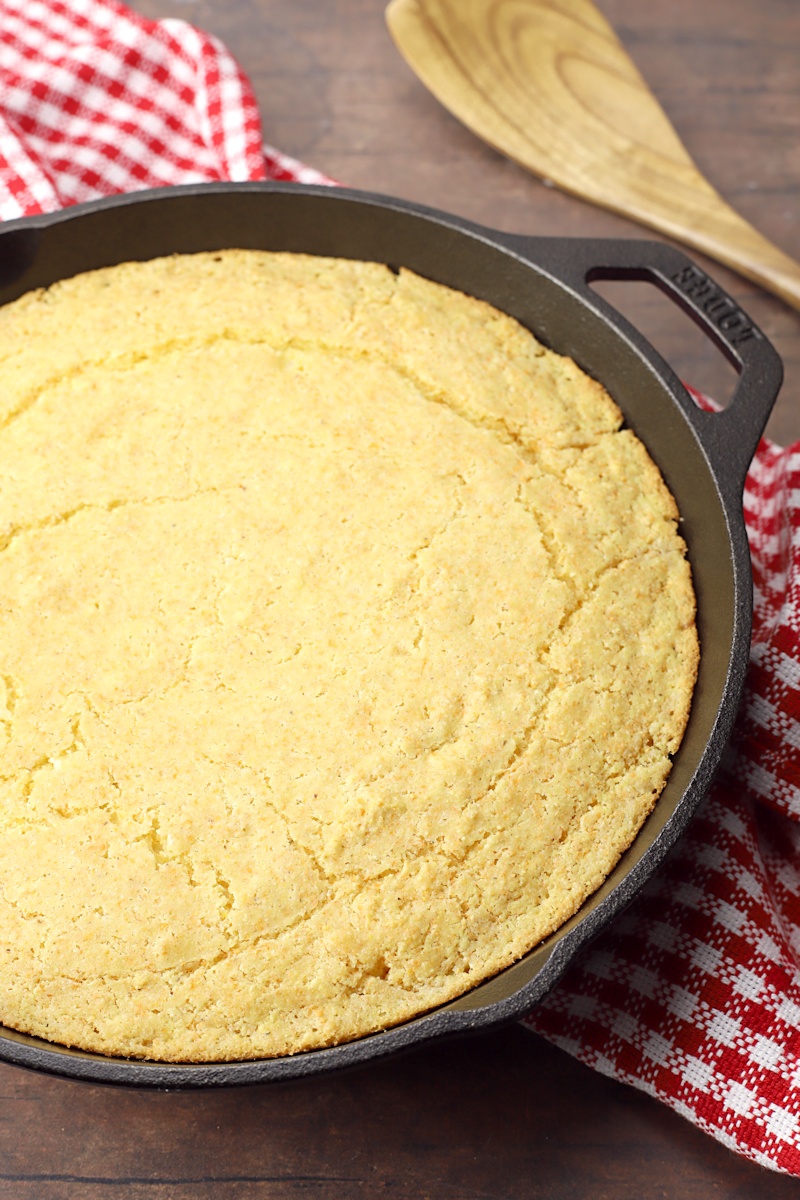
Skillet cornbread is a fantastic side dish to add to your next meal. I love pairing it with slow cooker chili! It's easy to whip up with a few simple pantry ingredients and ready in less than 30 minutes.
When made in a cast iron skillet, cornbread develops a golden, crunchy crust on the bottom. It's tender, buttery, and light on the inside - not dense or dry.
Serve this cornbread with your next hearty meal, like taco chili, pulled pork, ribs, or baked chicken. Leftovers freeze beautifully, too, saving you time on a future meal!
Ingredients and substitutions
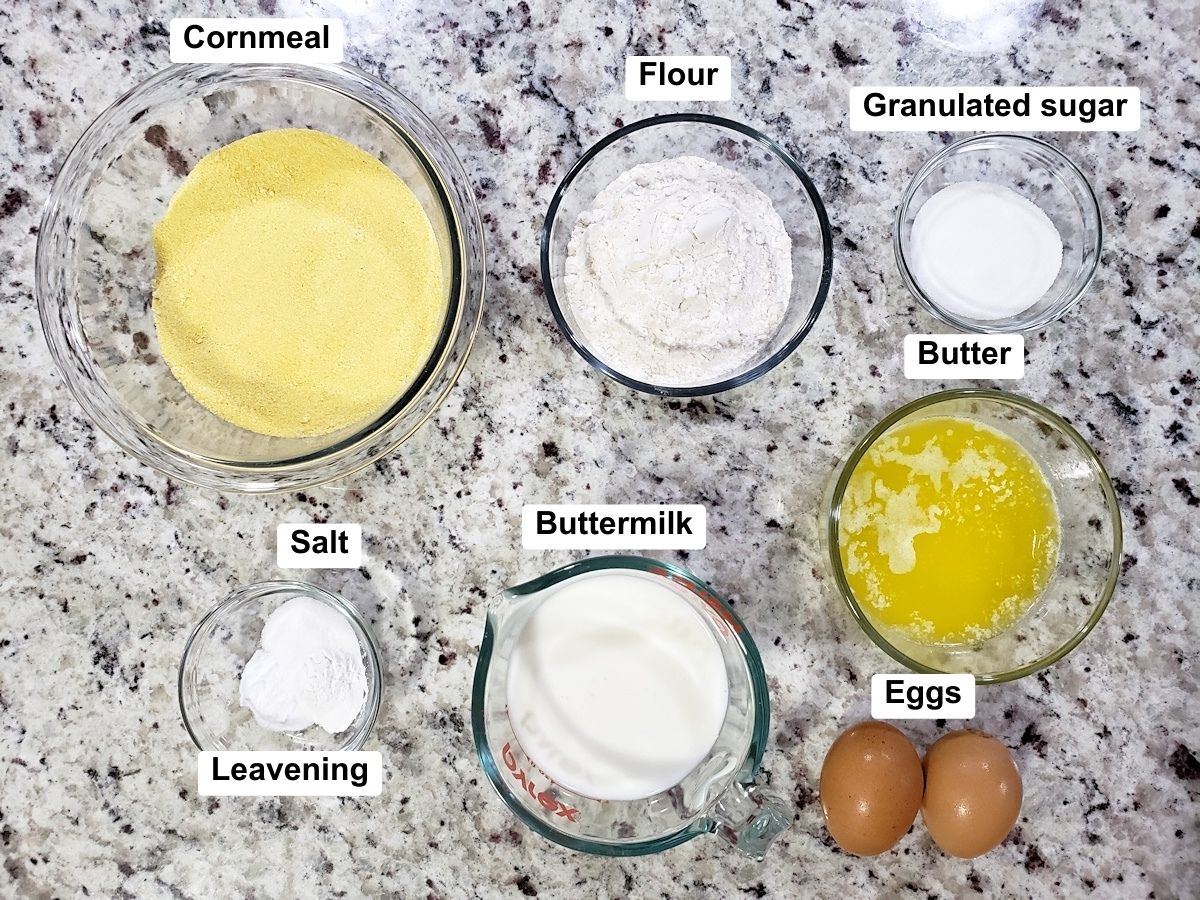
- Eggs - Add structure and moisture to your cornbread recipe.
- Buttermilk - A must for this recipe. Buttermilk adds a bit of tang and moisture to your cornbread. If you don't have buttermilk on hand, add 1 tablespoon of lemon juice or white vinegar to a liquid measuring cup. Then, fill to the 1 cup line with whole milk. Allow it to set for 5 minutes and you have made a buttermilk substitute.
- Butter - Adds flavor and moisture to your cornbread. Unsalted butter and ¼ teaspoon of the listed salt can be substituted with salted butter if desired.
- Cornmeal - I prefer to use yellow cornmeal for my cornbread. However, yellow or white cornmeal will work in this recipe. White cornmeal has a more subtle flavor, but otherwise adds the same texture.
- All-purpose flour - Adds structure and balances with the wet ingredients in the recipe. I haven't tested this recipe with other types of flours, so I can't say for sure how it would turn out. To prevent wasting ingredients, I recommend searching for a recipe that's developed for the type of flour you'd like to use.
- Leavening - You'll need both baking soda and baking powder to achieve the proper lift in this recipe. One cannot be substituted with the other.
- Salt - Enhances the flavor of your cornbread.
- Sugar - A small amount of sugar promotes browning and balances the flavor of the cornbread. If you like a sweet cornbread, feel free to double the listed quantity of sugar. Otherwise, this cornbread has a savory flavor with just a hint of sweetness.
Tips and tricks
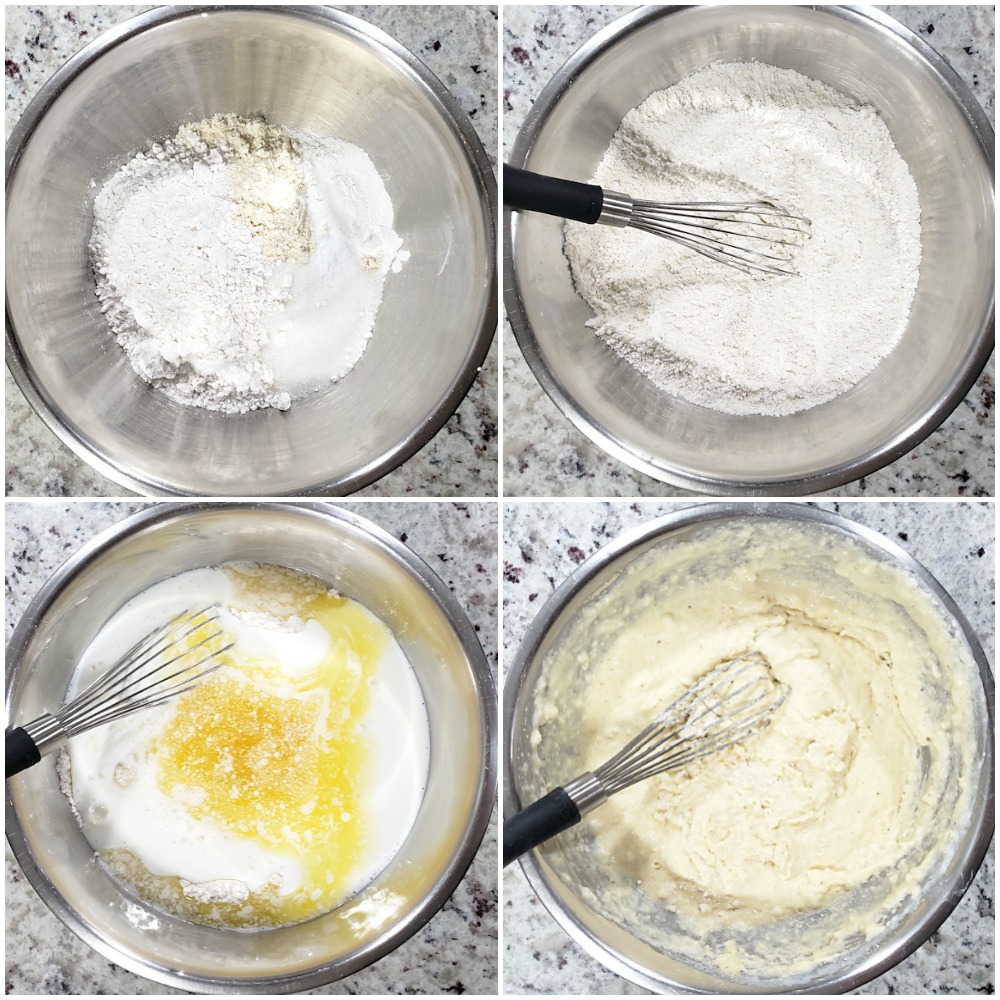
Make-ahead dry mix - If you're often pressed for time during the week, this cornbread mix can be made ahead. Measure all of the dry ingredients into a container or plastic bag. When the mood strikes, all you'll have to do is add buttermilk, melted butter, and eggs.
Preheat your pan - Preheating your cast iron pan in the oven beforehand helps prevent sticking and develops that crunchy crust on the bottom. Simply stick your pan in the oven while it preheats, carefully remove with an oven mitt, add butter and swirl to coat, then add your batter.
Don't overmix - Stir your cornbread mixture until the ingredients are just combined, then stop. Overmixing anything including gluten (such as cookie dough, cake batter, or cornbread batter) can cause your baked goods to turn out tough and dense.
Bake until golden - Bake your cornbread until golden around the edges and set on top. Your cornbread should bounce back when pressed gently in the center. For best accuracy, use an instant-read thermometer (cornbread is done between 195 and 200 degrees Fahrenheit).
Allow to cool before slicing - Allow your cornbread to cool for about 5 minutes before slicing. Cutting into piping hot bread releases steam, which dries out your fresh-baked bread.
Frequently asked questions
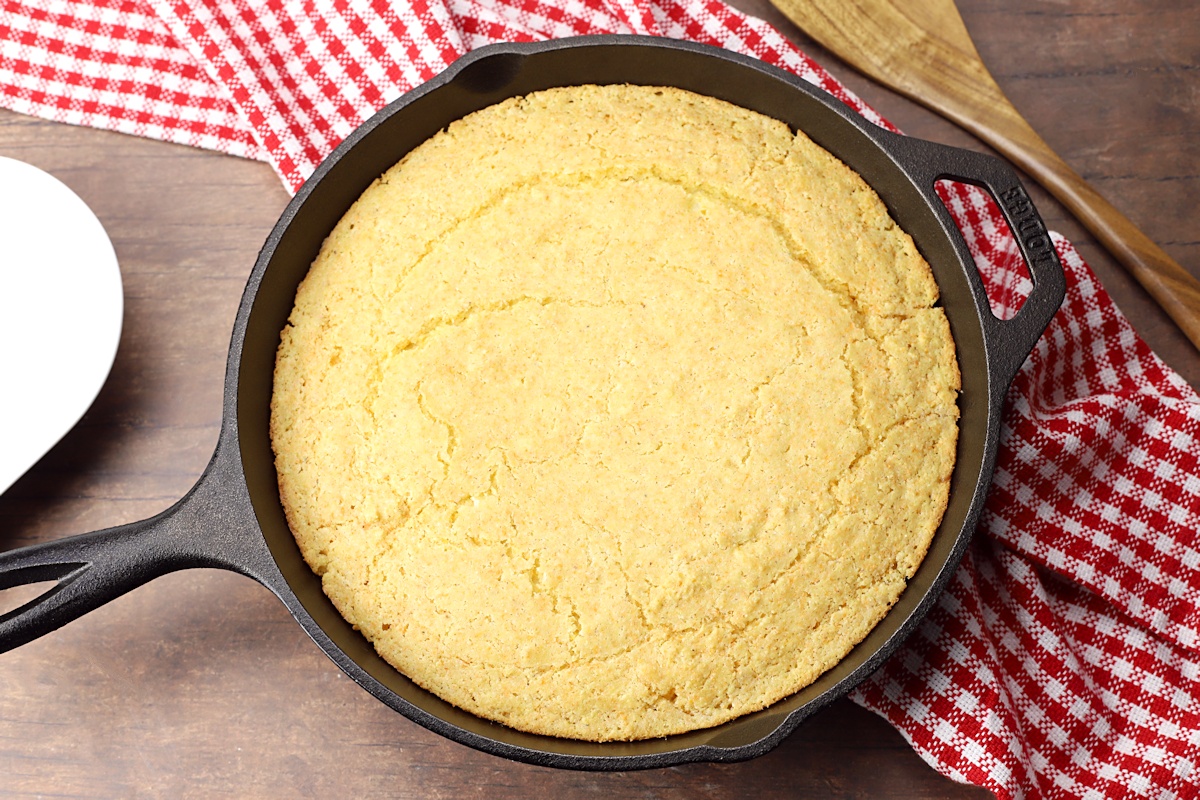
Cornbread is best served the same day of baking for ideal flavor and texture. If you have leftover slices, I suggest warming them in the microwave (10 to 15 seconds should do the trick) and spreading with butter.
I used a 10 inch Lodge Cast Iron Skillet (Amazon) to make this cornbread recipe. If you don't have a cast iron pan on hand, you can substitute with a 9 to 10 inch round pie pan instead. Keep in mind that your baking time may vary slightly.
Cornbread sticks to cast iron when it's not preheated and/or greased beforehand. This is why I recommend preheating your skillet in the oven, then adding butter before adding the batter. A hot, greased cast iron skillet starts baking the batter immediately, which creates a crust that helps add structural integrity to your cornbread. Once baked, allow your cornbread to rest for about 5 minutes before removing from the pan. If you're not using a cast iron skillet, you could also try adding a layer of parchment to the bottom of your pan to help prevent sticking.
Yes! Baked cornbread is one of my favorite sides to keep on hand in the freezer. Allow your cornbread to cool completely. To freeze individual slices, place on a parchment lined baking sheet and freeze for about 1 hour, or until solid. Transfer the slices to a freezer-safe container or plastic bag, seal tightly, and freeze. Cornbread will keep for about 3 months in the freezer. To thaw, place on the countertop to bring to room temperature for about an hour.
The sugar doesn't just add sweetness - it also adds moisture, helps promote browning, and balances the flavor. Since we're only adding two tablespoons of sugar, this cornbread tastes savory with barely a hint of sweetness. If you don't like sweet cornbread, I recommend substituting the 2 tablespoons of sugar with 2 tablespoons of whole milk or melted butter to make up for the lost moisture.
If your cornbread turns out dry, it's likely that it was overbaked. Keep an eye on your cornbread, set a timer, and test it for doneness when it looks golden brown around the edges. The center should pop back when gently pressed, and the internal temperature should be around 195 to 200 degrees Fahrenheit when tested with an instant-read thermometer.
If you omitted or reduced any of the moisture-adding ingredients, like eggs, buttermilk, butter, or sugar, this can also cause your cornbread to turn out dry.
Recommended
📖 Recipe
Cast Iron Skillet Cornbread
Ingredients
- 1 ¼ cups (195 g) ground cornmeal
- ¾ cup (90 g) all-purpose flour
- 2 tablespoons granulated sugar
- 2 teaspoons baking powder
- 1 teaspoon baking soda
- 1 teaspoon salt
- 1 cup (227 g) buttermilk
- 6 tablespoons unsalted butter, melted
- 2 large eggs
Instructions
- Preheat oven to 425 degrees Fahrenheit. Place a 10 inch cast iron skillet in the preheating oven to warm up while you mix your batter.
- In a large bowl, add cornmeal, flour, sugar, baking powder, baking soda, and salt. Whisk to remove clumps. Make a well in the center of the bowl.
- Add the buttermilk, melted butter, and eggs to the dry ingredients and stir until just combined. Let the batter sit for 5 minutes in the bowl.
- Carefully remove the hot skillet from the oven and coat the bottom and sides with butter (or a neutral cooking oil).
- Pour batter into the hot skillet and place back in the oven. Bake for about 18-20 minutes, or until the edges are golden and the center pops back when gently pressed, or when the internal temperature reaches 195 to 200 degrees Fahrenheit when tested with an instant-read thermometer.
- Allow to rest for 5 minutes before slicing. Optionally, brush the top with additional butter just before serving.
Equipment Recommendations
Notes
- If you do not have a cast iron skillet, this can be made in a 9-inch round deep dish pie pan. Baking time may need to be adjusted.
- Cornbread will keep for 1-2 days in a sealed container at room temperature or frozen for up to 3 months.

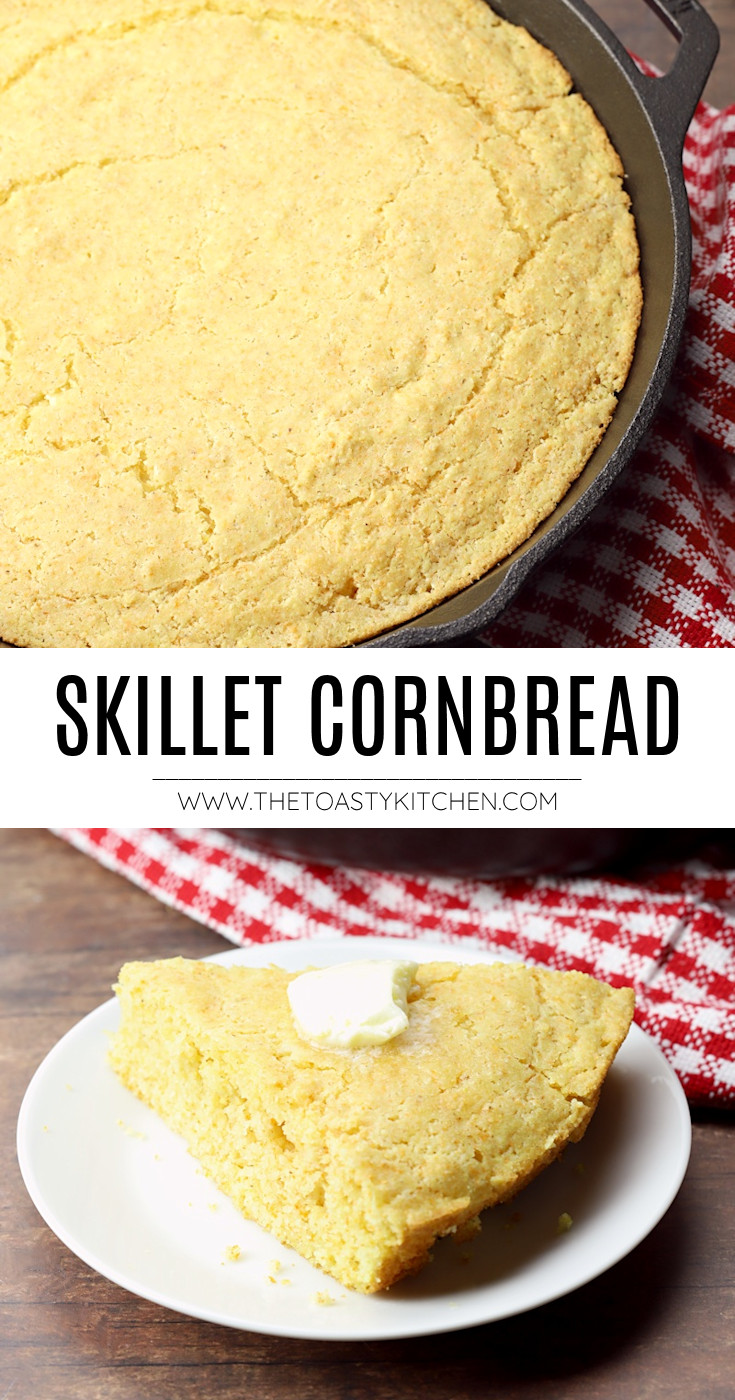
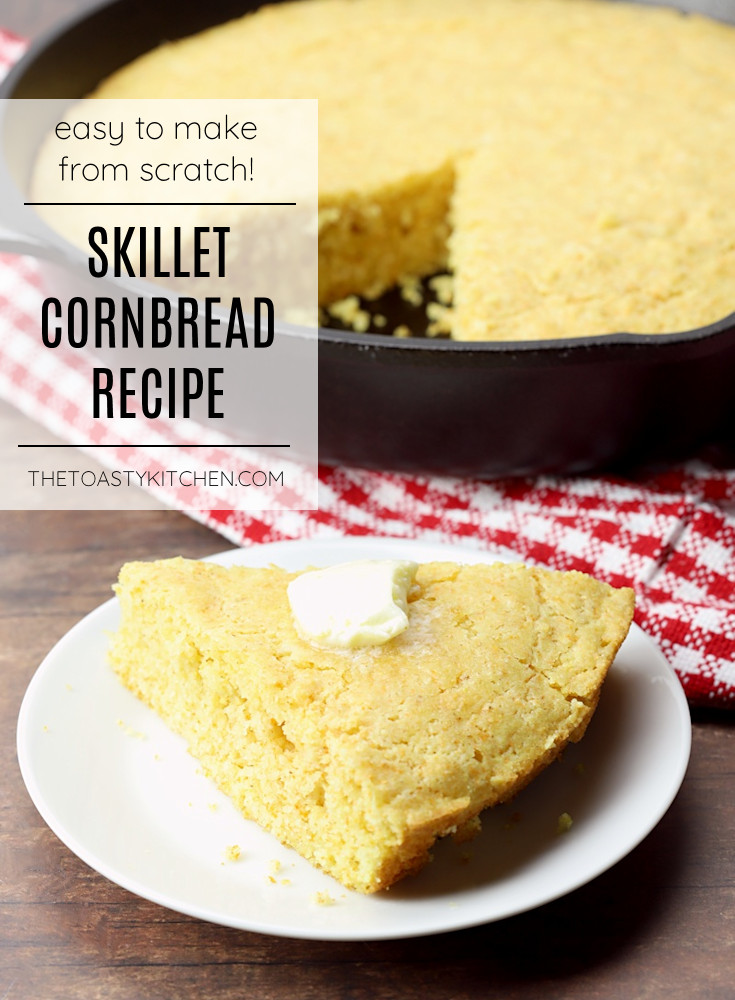
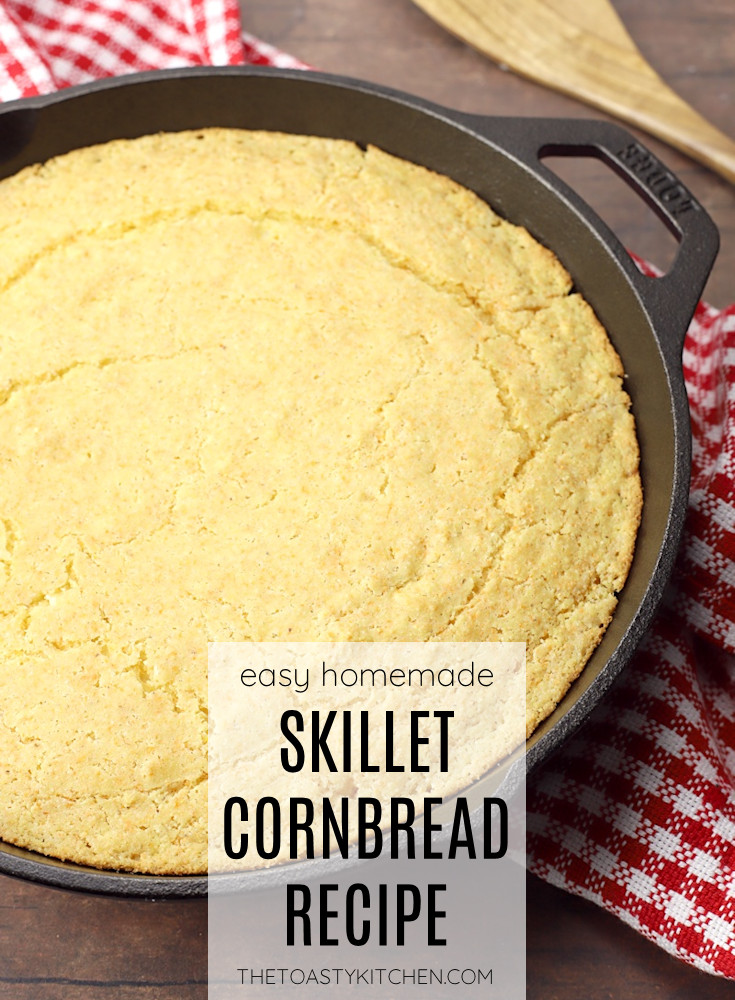
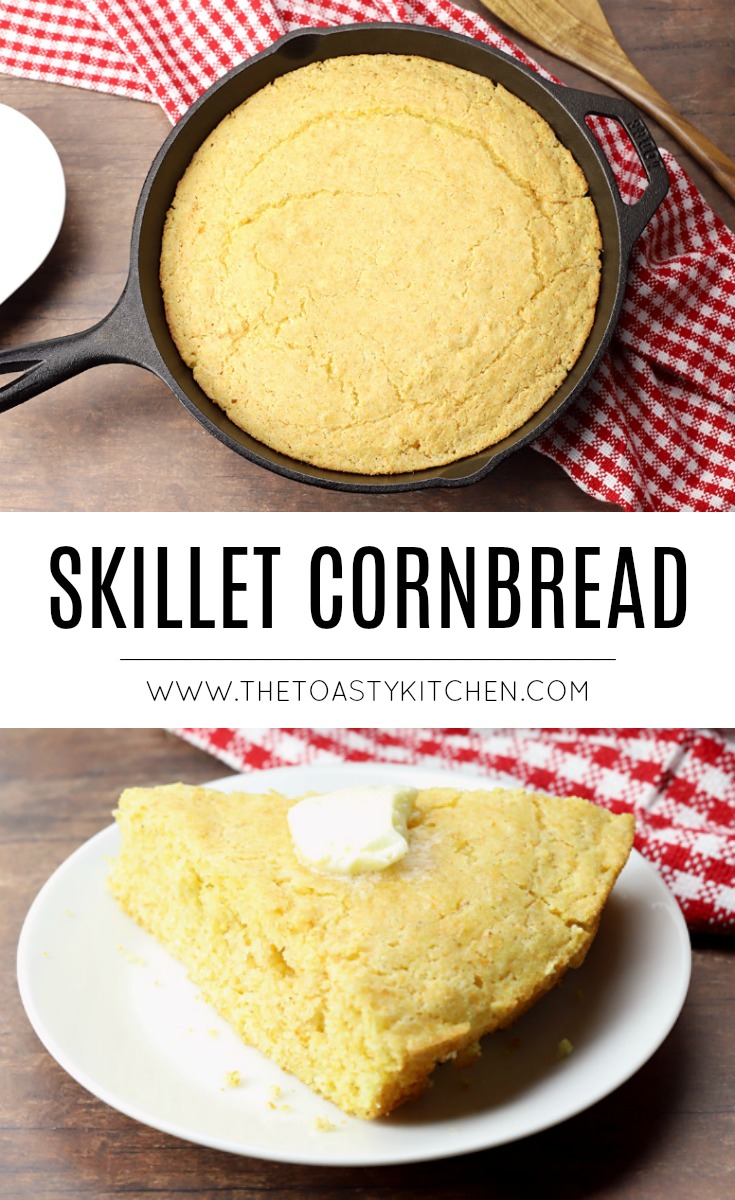
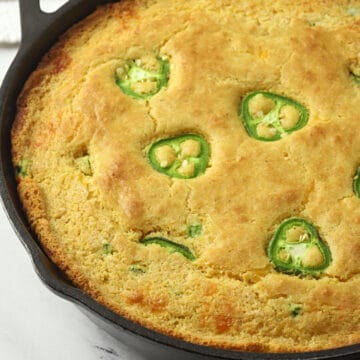
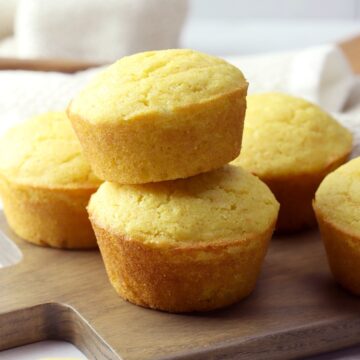
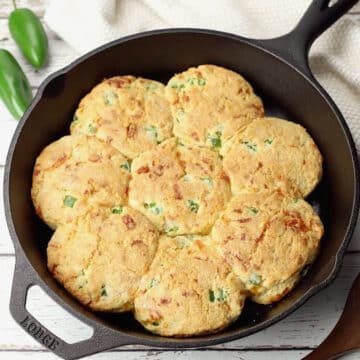
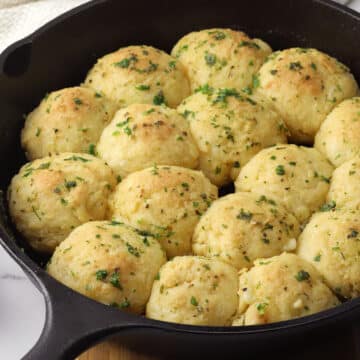
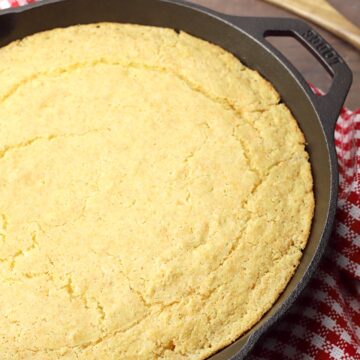
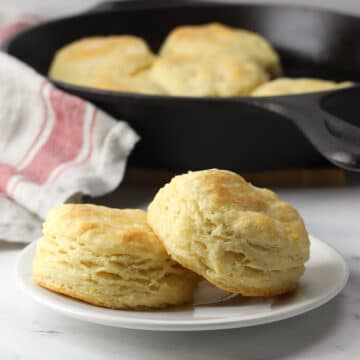
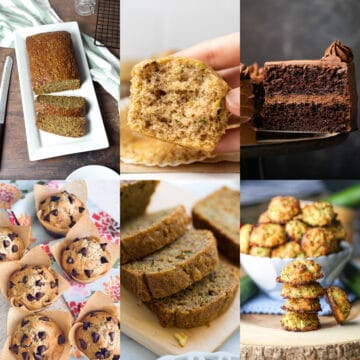
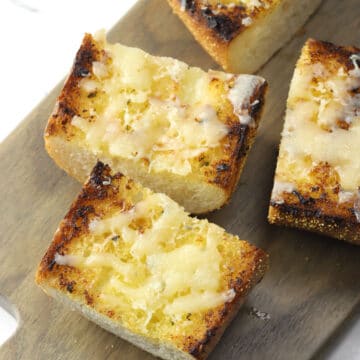
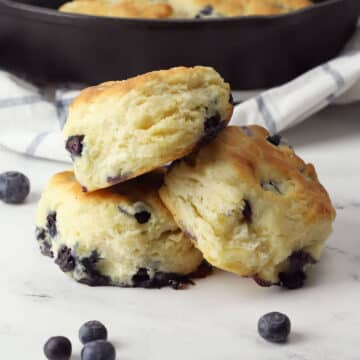
Your corn bread is a staple in my home. Love your recipes. I found a sauce recipe that has tomato paste in it but do not remember where I got it from. Since I go to your site often I was wondering if that was from you. It was excellent for fish and chicken. Anyway, thanks for all you do! Have a great weekend!
Hi Chris, the sauce does not sound familiar, it must be from another site. I'm so glad you enjoy the skillet cornbread!
Very easy to make and turned out great! Will make again.
Glad to hear you enjoyed it!
For a little extra flavor add 1 small diced onion & about 5 diced jalapeño peppers. Add onions and jalapeños with other ingredients and mix thoroughly so they are mixed throughout batter.
This is a great idea Charles, thanks for sharing!